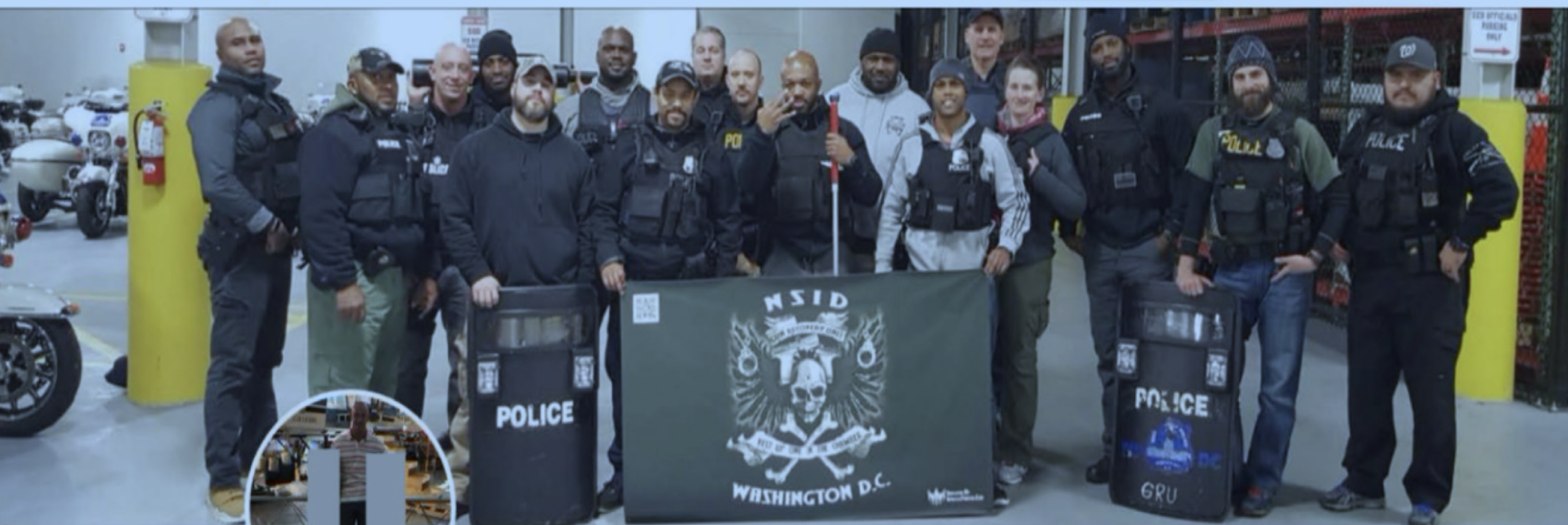
T.W. and the “jump out” cops in D.C.
They are known on the street as the “jump out” cops.
They cruise poor parts of town in unmarked cars, one car following the other. There are 3 or 4 officers in each car. They pull up and jump out at the slightest hint of criminal activity.
Sometimes they see a suspect walking with a lopsided gait or swinging only one arm. This suggests the person is carrying something heavy on one side of his body. More commonly, officers see the bulge of a handgun tucked into the front of the suspect’s pants.
It used to be the “gun recovery unit.” That was disgraced and disbanded. Now we have “crime suppression units” manned by many of the same officers.
I have not seen Officer Bewley since I got him to admit under oath that he had a long history of harassing young black men. On the body worn cameras, you can distinguish between Officers Laurie and Painten by the tattoes on their forearms.
The officers wear mismatched uniforms and gear. This gives them a distinct military vibe. They are dismissive in person. They are arrogant on the stand. Sometimes they bicker among themselves as they execute a search warrant or wait for the transport van to arrive.
All over D.C., young black men are lifting their shirts to show their waists as the unmarked cars cruise past. We have no idea how many young men are stopped, searched and then released each day because those cases do not show up in court.
What we do see are the cases in which the officers’ preconceptions prove to be true.
The defendant in T.W. v. United States, 292 A.3d 790 (D.C. 2023), “popped out” of an alley connecting a parking lot to the street. Upon seeing the police cars approaching, he walked back toward an apartment building.
After all, as the D.C. Court of Appeals put it in an earlier case, not every citizen relishes contact with police.
Finding T.W.’s actions suspicious, the officers pulled their cars up alongside T.W., got out of the cars and approached him from all sides. T.W. put his hands up in the air as if to surrender.
The officers twice asked him if he was armed. Twice he said no. One of the officers asked him if he could pat him down “just to make sure.” Upon frisking him, the officers recovered a firearm from his waistband.
The government argued that T.W.’s “consent” to the search validated its authorization under the Fourth Amendment.
The D.C. Court of Appeals disagreed, and reversed the conviction. Discussing both the officers’ approach and their questioning, it gave the following reasons.
First, T.W. was the only person in the area.
Second, police cars, in this case marked, with all least three armed and uniformed officers in each, quickly pulled into an alley after T.W.
Third, the positioning of the officers’ cars boxed T.W. in. This signaled to him that he was not free to leave.
Fourth, he was approached from all sides by police officers.
Fifth, the officers asked T.W. only accusatory questions, with every question suggesting their belief that he was armed.
Finally, although T.W. twice denied having a gun, the officers refused to accept his answer. Instead, they asked if they could search him “just to make sure.”
A person can be seized for Fourth Amendment purposes as long as the surrounding circumstances would lead a reasonable person to believe he or she was not free to unilaterally terminate the encounter with officers and go about his or her business. Jones v. United States, 154 A.3d 591, 598 (D.C. 2017).
In this case, T.W.’s walking back toward the apartment building did not provide police with the requisite legal basis for stopping him.
